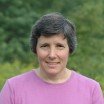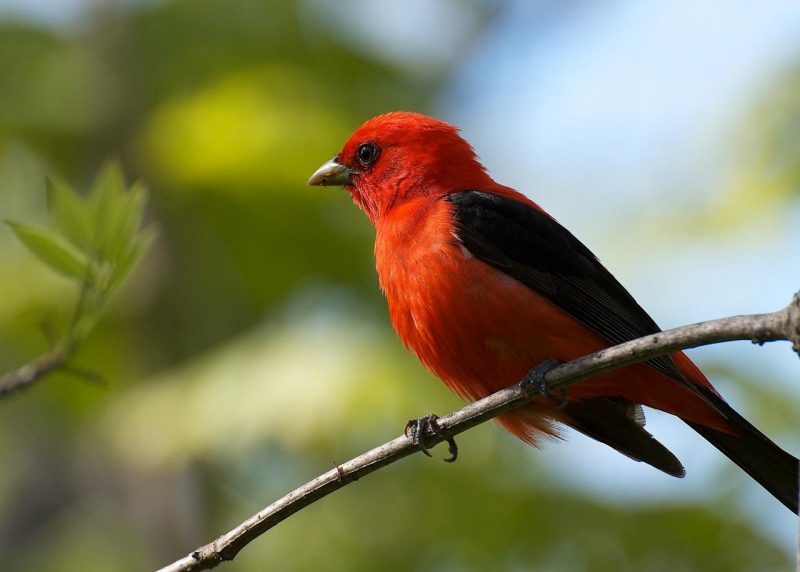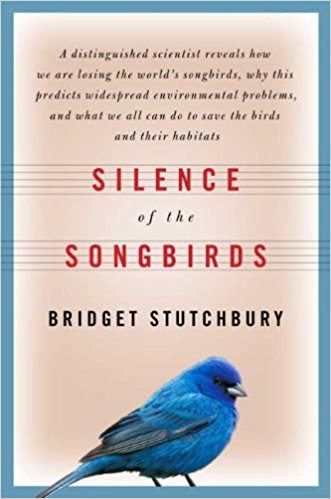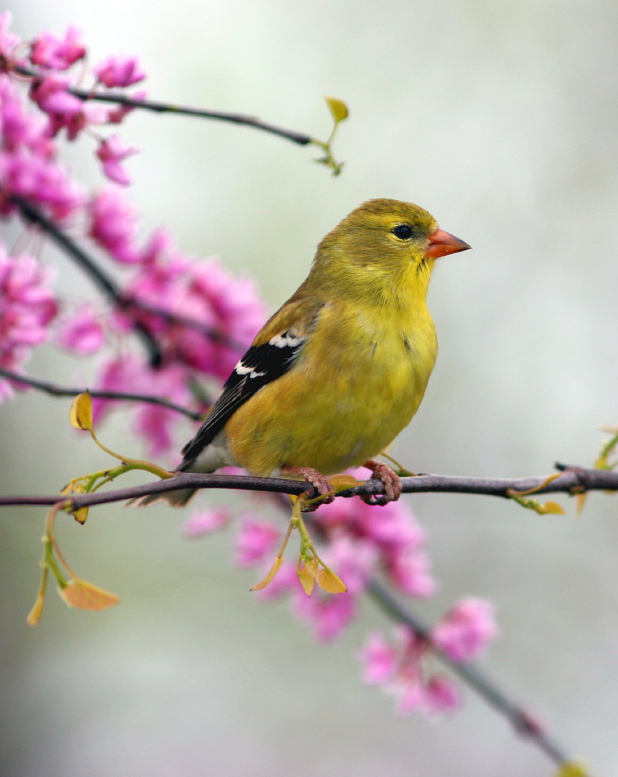Get to know Women for Nature member Bridget Stutchbury

Featuring Women for Nature member Bridget Stutchbury. Written by fellow Women for Nature member Eleanor Fast.
As part of the Women for Nature blog series I had the great pleasure of chatting with Bridget Stutchbury, a founding member of Women for Nature.

Bridget is Professor and Canada Research Chair in Ecology and Conservation Biology at York University, Toronto. She studies songbirds and follows their migrations to South America and back to understand their behaviour, ecology and conservation. Bridget is a leading researcher on Purple Martins (a species that Nature Canada is also involved in protecting). She is author of the bestselling book Silence of the Songbirds and is a frequent media spokesperson on conservation issues.
Bridget’s amazing research and public outreach work is truly inspirational and it was wonderful to have the chance to learn more about her research and passion for communicating science – as well as finding out what’s on her birdwatching wish-list! This is a summary of our conversation.
Eleanor (E): How did your career begin, why did you choose to study birds?
Bridget (B): I fell into bird conservation by accident. During my 3rd year of university at Queens I did courses which involved weekend field trips to study limnology and basic ecology. During these weekends I got hooked on field biology and was encouraged to seek out a summer job in ecology. So I did, and was hired for the summer to do a Tree Swallow study. At the time I had no bird identification skills at all – I could recognize a Canada Goose but that was about it! I really enjoyed the research and went on to study Tree Swallows for my undergraduate and Masters theses. Then for my PhD I went to Yale and studied Purple Martins. Throughout my studies I was interested in how cavity-nesting species fight for limited nest sites. There are a lot of parallels to human behavior, for Purple Martins persistence pays off and the young bird without a nest just has to keep at it – they go back to the nest sites day after day after day until one of the older birds who control several nest sites will give one up to a younger bird. It’s fascinating.
E: What is the most surprising research finding you’ve had in your career?
B: Being able to track bird migrations has led to some really surprising and exciting results. We were able to tag Purple Martins in Northwestern Pennsylvania, and we have learned that they over-winter on Islands in the Amazon. We didn’t know that before so it is really important to have the tracking technology as now we know which areas are the most important for conservation.
E: What is your favourite bird and why?

Bridget’s favourite bird – the Scarlet Tanager
B: I’m fascinated by the Scarlet Tanager – it’s a beautiful bold coloured bird, yet in the forest it is so subtle and hard to find. It also has fascinating social behaviour with males doting on their females who are frequently begging for food handouts (I think this helps females judge a male’s parental ability when it comes time to feed the chicks).
E: What bird would you love to see in the wild but haven’t yet?
B: The Kakapo, it’s a flightless giant parrot from New Zealand – the world’s largest parrot. There are only 125 left in the world, but it is a “conservation hero” success story with millions of dollars each year spend on their conservation on small islands where dangers such as cats and rats have been eliminated. It was once thought to be extinct but one small population was discovered and rescued.
E: As well as being a scientist, you are also an author. Probably your best known book, Silence of the Songbirds, was shortlisted for the Governor General’s Prize – quite an honour! Does writing come easily to you? How do you go about translating your research into a popular book?
B: I was surprised to find that writing comes quite easily to me. Before starting my first book I read books on how to write books! The advice was always to let your natural voice come through, and when I took that advice to heart I found writing to be fun. I find that the teaching part of my job as a professor helps a great deal because when I’m giving lectures to undergraduate students (the vast majority of whom will not pursue a career in conservation) I need to find interesting ways of engaging them for 50 minutes at a time while also conveying rigorous scientific concepts. It’s a similar challenge to writing a book, how can I portray complex ideas in unique and interesting ways. I actually find that all kinds of science outreach whether it is teaching or writing or speaking with the media require similar skills and the approach is transferable.
E: Are you working on any books right now?

Silence of the Songbirds by Bridget Stutchbury
B: Yes, I’m writing a book about conservation triage – about how we make decisions on which species we should be investing resources on protecting. For example, $3-5 million is spent each year on conserving the Kakapo in New Zealand. For the same investment, we might be able to protect several species. How do we make those decisions? Of course, we need more investment in conservation, but even then we won’t be able to save everything. I hope it will be a tool for getting people to think about endangered species and what can be saved but also the extinctions that will happen if we do not invest more. It will be a book for reading at the dock at the cottage but also relevant for policy makers as well. I’m still writing it and it doesn’t have a title yet but I’m hoping it will be published in a year or so.
E: Apart from your own, what book related to nature conservation do you think is a must-read?
B: Last Child in the Woods by Richard Louv. That book has had a profound impact on environmental education and is an important message for everyone. Nature Canada does such great work in encouraging children to get outside into nature and that’s something that is so needed these days. People have to experience nature and enjoy it, then they will start thinking about conserving it.
E: You’ve also been on TV, and were featured in The Messenger documentary. How does it feel to be a movie star?!
B: I enjoy doing all kinds of outreach, whether it is TV, radio, writing, or documentaries. As a scientist, it is important to write scientific papers and advance knowledge, but I find it is increasingly important and satisfying to me to get the message out to the general public in all kinds of ways.
E: What is your favourite TV or film experience?
B: SOS Songbirds which was a Nature of Things episode. I advised the producers and directors from day one and so it was exciting to see their years of hard work featured on such an iconic program. It is a good length at 40 minutes and delves into about the right level of detail for the general public, I think.
E: What inspired you to become one of Nature Canada’s Women for Nature?
B: Being part of Women for Nature is such a great opportunity to work with a unique and diverse group of women to help Nature Canada’s nature conservation work. There are so many interesting women involved, and I bought a couple of friends to the amazing Nature Ball last fall where I met some Women for Nature – it was so inspirational!
E: You’ve had, and continue to have, a big impact on nature conservation. What is your proudest accomplishment?

American Goldfinch
B: I think my biggest accomplishment was writing “Silence of the Songbirds”. It was my first book – I didn’t know I could write before that, and to have it shortlisted for the Governor General’s Prize was amazing. And Margaret Atwood was involved in promoting the book, seeing posters in bookstores and in Toronto subway cars of her holding my book was a huge honour. The experience made me realize that outreach is really important to my scientific career, and looking back I realize that I wouldn’t have had such a fulfilling career if I hadn’t embraced public outreach in such a big way.
E: As a scientist how do you feel about the future? Are you concerned or optimistic?
B: Both really. It’s hard not to be concerned about the future with all the evidence we have of the rapid rate of biodiversity loss. I don’t have grandchildren yet, but with the rapid rate of biodiversity loss in what is being called the Anthropocene extinction I often worry about what kind of wildlife will be around for my future grandchildren.
But on the other hand, there is lots to be optimistic about too. There is a lot of interest about conserving the environment and organizations such as Nature Canada are leading what I hope will be an environmental revolution with people putting the environment as a high priority in daily lives and eventually elections. We’ve seen a lot of social revolutions in my lifetime already around religious rights, gender rights, sexual rights–why not an environmental revolution?
E: What advice do you have to young women today who want to make a difference and protect and conserve nature?
B: Follow your passions! I think a lot of people today are trying to assess the job market and make decisions based on where they think they can get jobs, instead of focusing on what they enjoy.
I never worried about whether I would be able to get a job, I just followed what I found I loved to do and am having a wonderful career. Today there are so many opportunities in field ecology and nature conservation, if someone is very passionate about it they can find a way.
I think role models are very important – 50 years ago there were few female field researchers, but now it is normal for women to be working in remote field camps, or leading research groups, I hope that the visibility of women in these roles will show young women that they can follow their passions.
To read or hear more about Bridgets passion for songbirds, check out these stories below:
Ottawa Sun- Songbirds now report their locations as they fly
Bridget Stutchbury Sneak Preview – The MESSENGER Documentary



